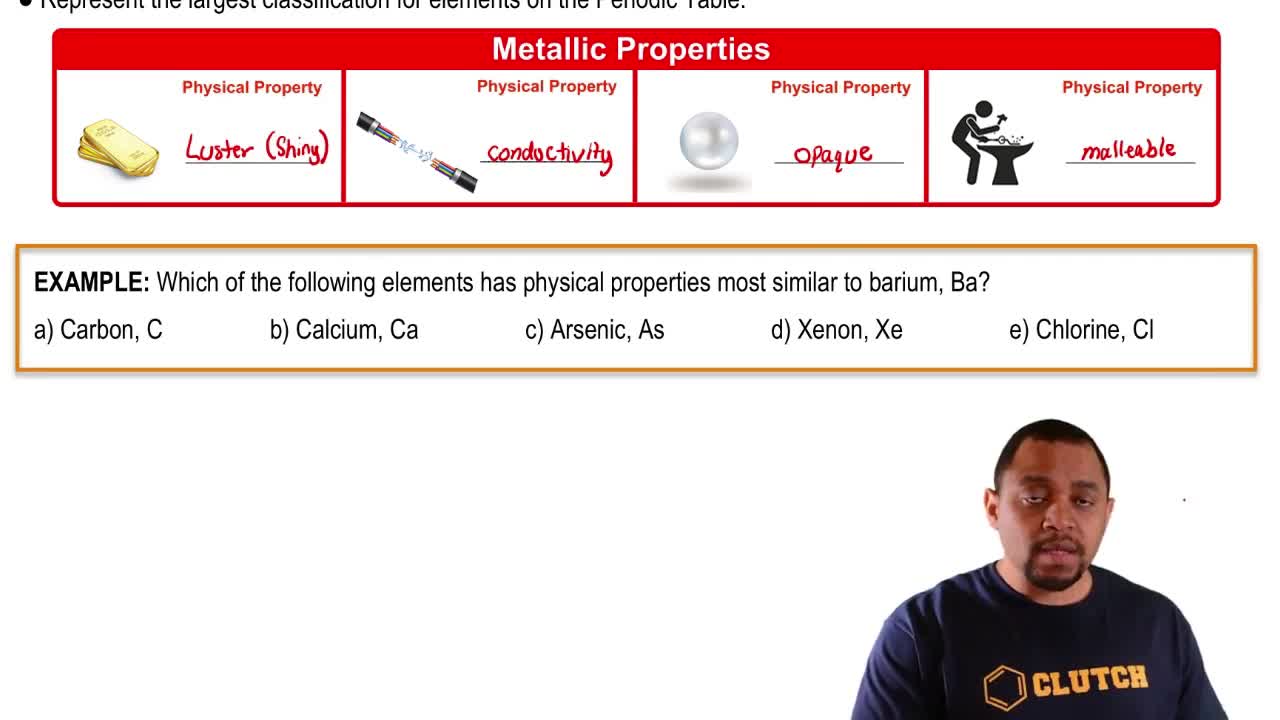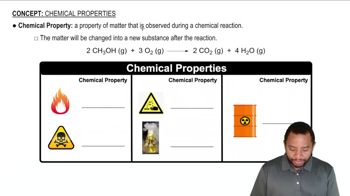Here are the essential concepts you must grasp in order to answer the question correctly.
Periodic Trends
Periodic trends refer to the predictable patterns in the properties of elements as you move across or down the periodic table. These trends include atomic radius, ionization energy, and electronegativity, which help in understanding the similarities and differences between elements. For example, elements in the same group often exhibit similar chemical properties due to their similar valence electron configurations.
Recommended video:
Element Classification
Elements are classified into categories such as metals, nonmetals, and metalloids based on their physical and chemical properties. Metals, for instance, are typically good conductors of heat and electricity, while nonmetals are more likely to gain electrons during chemical reactions. Understanding these classifications aids in predicting how elements will behave in reactions and their similarities with other elements.
Recommended video:
Element Classification Example
Chemical Similarity
Chemical similarity between elements often arises from their position in the periodic table, particularly within the same group or period. Elements in the same group have the same number of valence electrons, leading to similar reactivity and bonding characteristics. For example, halogens like chlorine (Cl) and fluorine (F) are both highly reactive nonmetals, making them more similar than elements from different groups.
Recommended video:

 Verified step by step guidance
Verified step by step guidance


